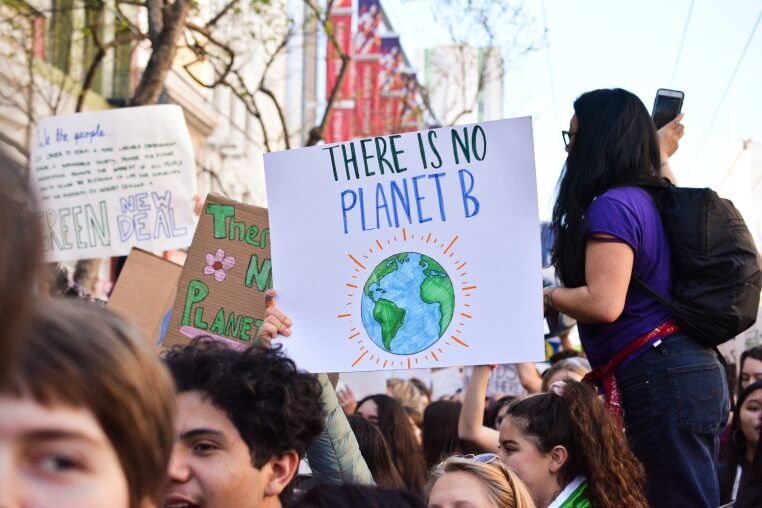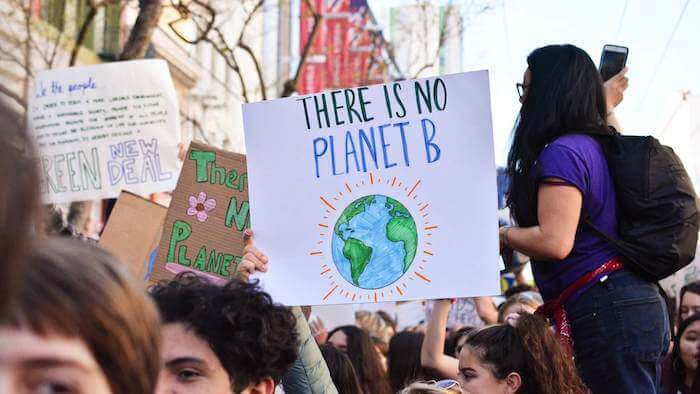When it comes to learning about such an overwhelming topic like climate change and its effects, it can be difficult to know where to begin. That’s why it’s always best to start with the basics.
As engaged students, you guys will know a fair bit about climate change already. It’s a serious issue dominating the conversation at the moment, popping up on your social feeds, the news, Netflix and political platforms (hopefully).
There are a ton of layers and complexities to the issue, though, so it’s easy to lose sight of the basics. Here, we go through the essentials to give you a solid foundation of climate change knowledge. Then you can really dive into the specific areas that you’d most like to learn more about.
Let’s get right to the main question:
What is climate change?
Climate change is the phenomenon where the world is rapidly warming up, leading to changes in weather patterns across the globe. This is primarily caused by the human activity of burning fossil fuels at an unprecedented rate, resulting in a greenhouse effect that has increased the average global temperature by approximately 1°C since the industrial era. Notably, two thirds of this increase occurred after 1975.
This may seem like a teeny change in temperature, but it has caused polar ice caps to melt, sea levels to rise and extreme weather events to become the norm (think all the floods, intense storms, severe droughts, forest fires and more happening around the world recently).
While average global temperatures have gone up and down throughout Earth’s history, scientists know that human activity is at the root of our current global warming problem. Why? Because our global temperatures are rising at a rate that’s faster than anything the planet has seen before.
Our greenhouse gas emissions have increased a lot because of industrialisation, deforestation and our agricultural practices. Today, our atmosphere contains about 42 percent more carbon dioxide than it did in the pre-industrial era. That’s not good.
If we keep going down this path, the effects of climate change are only going to get way worse. And the real kicker? The places with the lowest emissions and smallest carbon footprint—small islands and developing countries, for example—are probably going to be those most affected by the climate crisis.
What is a carbon footprint?
A carbon footprint is the amount of greenhouse gas emissions for which a person, place or thing is responsible. So, that could be a whole country, a company, a product, an activity, or even an individual. Nearly everything has a carbon footprint, from the last flight you took to the online video games you play.
There are a few greenhouse gases to take into account when calculating a footprint. Carbon dioxide is the most common, responsible for 76 percent of global greenhouse gases. But there’s also methane (16 percent) and nitrous oxide (6 percent).
In order to calculate a footprint, all other greenhouse gases are converted to their carbon dioxide equivalent (or CO2e) based on their global warming potential. Carbon footprints are generally measured in metric tonnes per year.
Why is calculating a carbon footprint important? Well, as consumers, knowing the size of a product, service or company’s footprint could help you decide where to spend your money (an electric car vs. petrol is an obvious example).
Also, and more importantly, understanding what contributes to a carbon footprint (say, for a company or a country) is a crucial first step in reducing it.

What is the Paris Climate Agreement?
The Paris Climate Agreement is a commitment signed by 195 countries at the UN climate change convention in December 2015. It aims to address the global crisis of climate change by implementing ambitious global-level intervention. The agreement requires countries to drastically reduce their carbon emissions by 2030 and achieve carbon neutrality by 2050.
The ultimate goal of the Paris Climate Agreement to limit the rise in global average temperature to below 2°C, and ideally, below 1.5°C, in order to mitigate the effects of global warming.
Why have there been global climate strikes?
Even though the Paris Agreement seemed very hopeful, progress has just not been fast enough. According to a 2018 IPCC report by leading climate change scientists, we only have until 2030 to keep global warming to a maximum of 1.5°C (even the extra 0.5 degree has us projected to face much worse outcomes). As of 2020, at the rate we’re going, the world is slated to reach a global temperature increase of 3°C.
So, sparked in large part by climate change activist Greta Thunberg’s weekly climate strikes, the world’s youth—those who will be most impacted by the effects—have staged protests to demand more action from world leaders and institutions, and draw more attention to the climate crisis.
Millions of people in more than 150 countries have participated in thousands of climate strikes around the world.

What do we need to do about climate change?
Yes, we’re already seeing the effects of climate change, but many scientists believe that a commitment to climate change solutions (a.k.a. major changes in our emissions) will help to soften the blow. And, thankfully, there are a lot of ways to reduce those emissions.
1. Government incentives to reduce emissions
For one, governments can place different incentives to shape people’s (and corporations’) behaviour. Carbon pricing, such as a carbon tax, helps to hold companies and individuals accountable for their carbon use by forcing them to pay a fee for their emissions. And tax incentives can help convince people to make the switch to electric transportation.
2. Investment in alternate power sources
We also need to invest less in fossil fuels and more in alternate power sources: nuclear and renewable sources such as wind and hydro.
3. Corporate transparency and accountability
Corporations should commit to full transparency and accountability when it comes to their carbon footprint and ultimately pledge to actively reduce and neutralise their emissions.
4. Individual lifestyle changes
As individuals, we can all make lifestyle changes to reduce our footprints. (Don’t worry, you don’t have to live off the grid in the woods.) Consider using energy-saving appliances and changing the way you get to school. And think about working towards an environmental job, eating less meat, wasting less food and just buying less stuff in general.
5. Active participation in the climate change movement
Last but not least, even if you’re not old enough to vote yet, consider being an active voice in the movement—and help to inspire change.
5 ways to mitigate climate change as a student
As students, it’s crucial to understand that you have the power to make a difference in the fight against climate change. Embracing climate change solutions as a student involves making small, conscious choices that can have a significant impact when practiced consistently over time. Here are five ways you can mitigate climate change as a student:
1. Embrace Sustainable Transportation
Opt for walking, biking, or using public transport whenever possible, as these options significantly reduce your carbon footprint. If you have a car, consider carpooling with friends or classmates to reduce the number of individual car trips.
2. Adopt a Green Diet
The meat and dairy industries contribute significantly to greenhouse gas emissions. By reducing your consumption of animal products and incorporating more plant-based meals into your diet, you can actively reduce your carbon footprint. Consider participating in Meatless Mondays or adopting a vegetarian or vegan lifestyle to make a real impact.
3. Conserve Energy and Water
Be mindful of your energy and water usage at home and school. Turn off lights when not in use, unplug electronics, and use energy-efficient appliances. Be conscious of your water consumption by taking shorter showers, turning off the tap while brushing your teeth, and fixing any leaks. Encourage your school to adopt water-saving measures and energy-efficient systems.
4. Support Eco-Friendly Initiatives
Get involved in environmental clubs or organizations in your school or community that promote sustainability, recycling, and conservation efforts. Support local eco-friendly initiatives, such as tree planting, clean-up drives, or campaigns to ban single-use plastics. If no such clubs or organizations exist, consider starting one yourself to engage your peers in the fight against climate change.
5. Educate and Inspire Others
Share your knowledge about climate change and its effects with your friends, family, and classmates. Encourage them to join you in adopting sustainable practices and participating in eco-friendly initiatives. One way to deepen your understanding and inspire others is to attend educational programmes, such as Oxford Scholastica’s Oxford summer school. Attending programmes like the International Relations summer school provide opportunities to engage with experts and fellow students to learn more about pressing global issues, including climate change.
Remember, every action counts, and as a student, you have the power to make a difference. By adopting these practices and inspiring others to do the same, you can help mitigate climate change and contribute to a more sustainable future for all.





